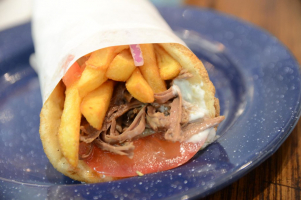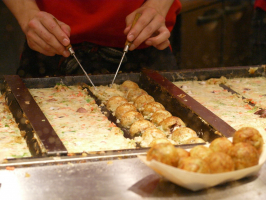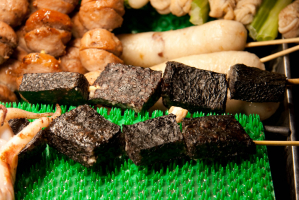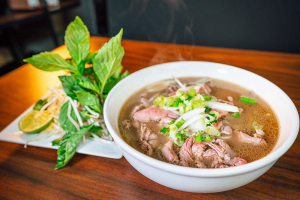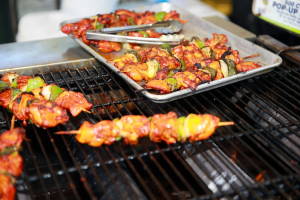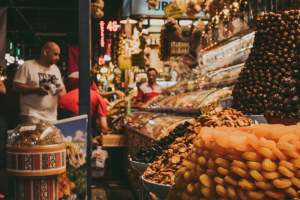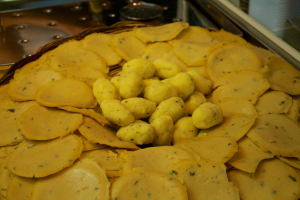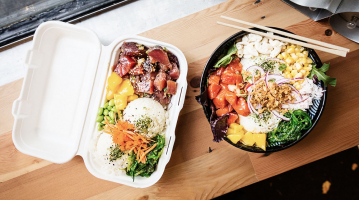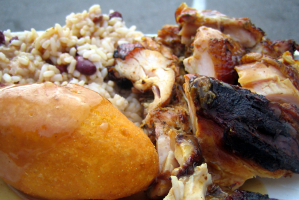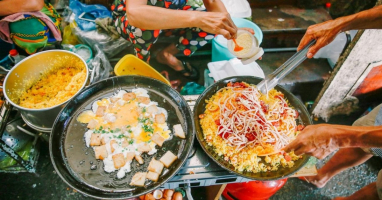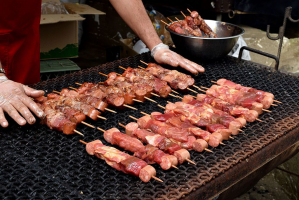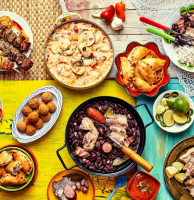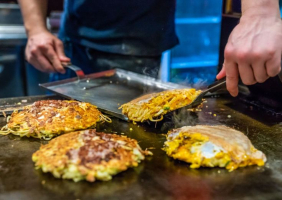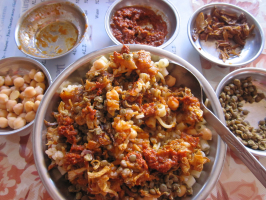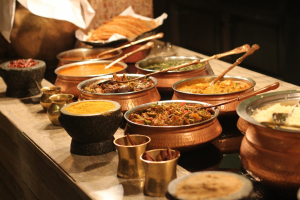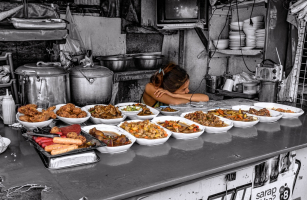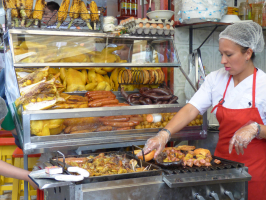Top 10 Must-Eat Mediterranean Street Foods
Mediterranean street foods have captured hearts worldwide. Their rich flavors and varied textures speak of ancient culinary traditions. This article explores ... read more...the depth and variety of these iconic dishes.
-
Falafel stands tall as the crown jewel of Mediterranean street foods. Dive into the streets of the Middle East, and the aroma of this delicacy envelops you. Born from the rich tapestry of Middle Eastern culinary traditions, falafel's history runs deep. It emerged as a staple in local diets and celebrations. With each bite, you're tasting centuries of culinary evolution.
Physically, falafel presents itself as deep-fried balls or patties. Their golden-brown crust gives way to a soft, herb-infused heart. These balls are primarily crafted from ground chickpeas or fava beans. The addition of spices and herbs elevates the taste. They give falafel its characteristic savory profile, tinged with a touch of herbal goodness.
Dive deeper into its preparation, and the simplicity stands out. Chickpeas or fava beans, once ground, are seasoned and molded into balls or patties. They're then deep-fried to a crisp. While the core recipe remains fairly consistent, some regions introduce twists. In some places, additional ingredients make an appearance based on local preferences or seasonal availability.
The taste of falafel is its defining feature. The primary savory notes are perfectly balanced with the freshness of the herbs. Each bite offers a dance of flavors, leaving a lasting impression on the palate.
Traditionally, falafel pairs with a spread of accompaniments. Pita bread envelopes the crispy balls, complemented by creamy tahini, fresh salad, and tangy pickles. Some modern twists include serving falafel as a salad topper or in fusion dishes. Regardless, it tastes best when hot, right out of the fryer.
Globally, falafel's popularity knows no bounds. From the bylanes of Middle Eastern bazaars to the upscale restaurants of New York, it's everywhere. Its frequent feature in food shows, movies, and on social media platforms attests to its universal appeal.
Key Takeaways:
- Origin: Middle Eastern
- Ingredients: Ground chickpeas or fava beans enhanced by herbs and spices.
- Flavor: Savory core with herbal freshness.
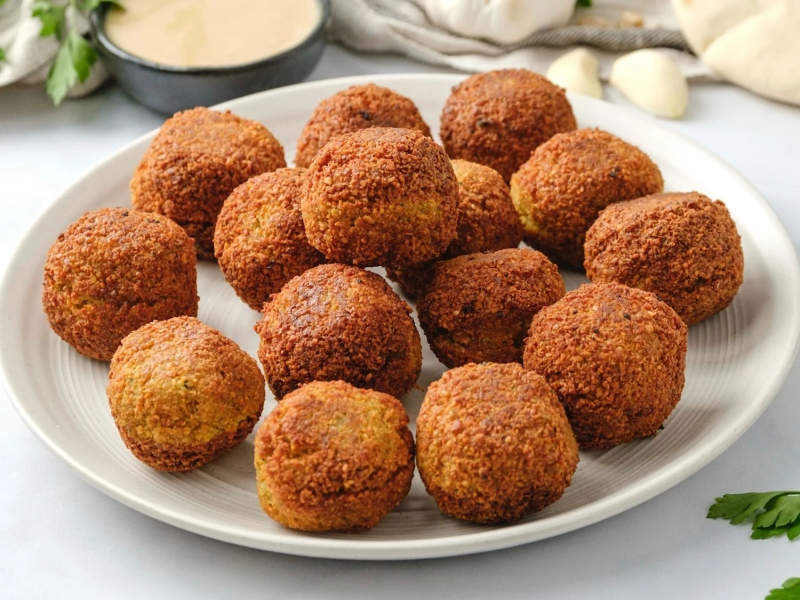
Screenshot of https://toriavey.com/falafel/ Video by Munchies -
Shawarma is a celebrated icon in the Mediterranean street food lineup. Stroll through a bustling Middle Eastern market, and you'll likely encounter its tantalizing scent. Shawarma has etched its mark on the culinary map, thanks to its Middle Eastern roots. Its inception traces back to ancient methods of meat preparation. Over time, it became an indispensable part of regional festivities and daily meals.
A glance at shawarma reveals layers of marinated meat stacked on a vertical spit. This tower of meat, often chicken, beef, or lamb, rotates beside a heat source. The outer layer crisps up beautifully while retaining juicy tenderness inside. The chef shaves off thin slices. This way ensures each serving has a mix of crispy and soft textures.
The magic of shawarma lies in its marinade. A concoction of yogurt, vinegar, spices, and herbs infuses the meat. This mixture ensures the meat remains moist and flavorful. Garlic, cumin, paprika, and turmeric often star in this seasoning blend. They grant the meat its distinctive taste.
When you bite into shawarma, the taste adventure begins. The meat's savory richness harmonizes with the tang from the marinade. The spices add depth, while the herbs introduce a hint of freshness. It's a symphony of flavors that keeps you coming back for more.
How is shawarma typically served? Thin slices find their way into soft flatbread. Fresh veggies, like tomatoes and cucumbers, add crunch. A generous dollop of tahini or garlic sauce brings creamy contrast. In some places, they even wrap shawarma in a tortilla. This is a way to blend cultures in every bite.
Shawarma's appeal isn't limited to the Mediterranean. Its fame stretches globally. Be it the food trucks of Los Angeles or the eateries of London, shawarma's presence is undeniable. Its frequent cameos in films and trending food blogs further amplify its worldwide allure.
Key Takeaways:
- Origin: Middle Eastern
- Ingredients: Marinated meat (often chicken, beef, or lamb) with a blend of spices and herbs.
- Flavor: Savory meat harmonized with tangy marinade and spice depth.
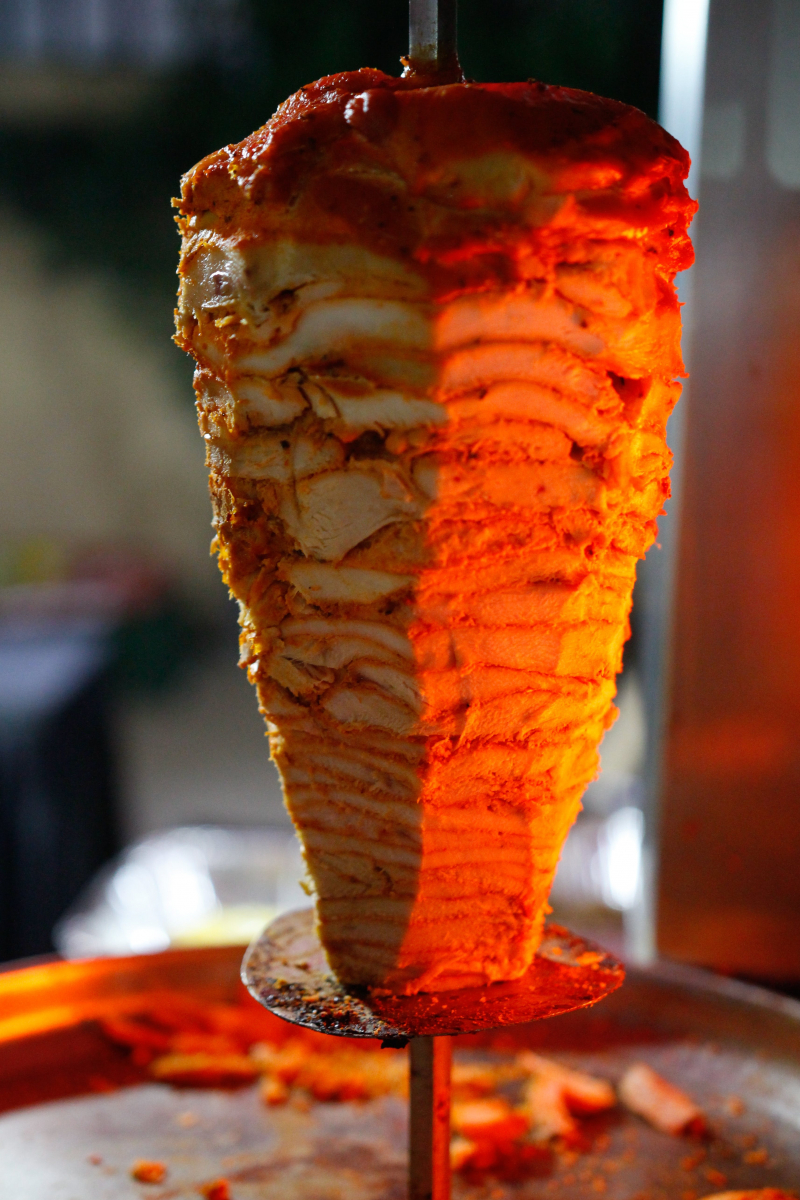
Photo by Mouktik Joshi on Pexels https://www.pexels.com/photo/delicious-chicken-shawarma-9646845/ Video by Recipes are Simple -
Kofta Kebabs, the flavor-packed skewers, proudly represent Mediterranean culinary mastery. Venture into any local bazaar from Turkey to Egypt, and their sizzle greets you. These skewers have a special place in the region’s food culture as they are woven through generations of family recipes. They encapsulate the spirit of gatherings, from backyard cookouts to large feasts.
At its core, Kofta Kebabs consist of minced meat, often beef or lamb. Unlike regular patties, these have a distinct elongated shape. The meat undergoes a transformation with the addition of onions, garlic, and a host of spices. Parsley often finds its way into the mix, adding freshness and color.
What sets Kofta Kebabs apart is their intricate blend of spices. Coriander, cumin, and paprika typically make the cut. These spices don’t merely add flavor but tell a story of ancient trade routes and shared culinary traditions.
When grilled, Kofta Kebabs release an aroma that's hard to resist. The outer layer turns a lovely shade of brown while the inside remains juicy. Every bite is a medley of meaty goodness, spice kicks, and herbal notes. The flavors meld together, creating a taste profile that’s robust yet well-balanced.
Serving Kofta Kebabs is an art in itself. They often lie atop a bed of rice or inside a fold of flatbread. Fresh salads with tomatoes, cucumbers, and onions provide a crunchy contrast. Sometimes, a tangy yogurt sauce accompanies them. This blend offers a cool respite against the kebabs’ warmth.
Kofta Kebabs have found fans far beyond the Mediterranean shores. Their popularity spans continents, from hole-in-the-wall eateries to gourmet restaurants. It's common to see them adapted to local tastes, further proving their universal appeal. Their rich taste and versatile nature make them a beloved dish
Key Takeaways:
- Origin: Turkey, Greece, and others.
- Ingredients: Minced meat (usually beef or lamb) mixed with onions, spices, and herbs.
- Flavor: Meaty richness accentuated by a medley of spices and fresh herbs.
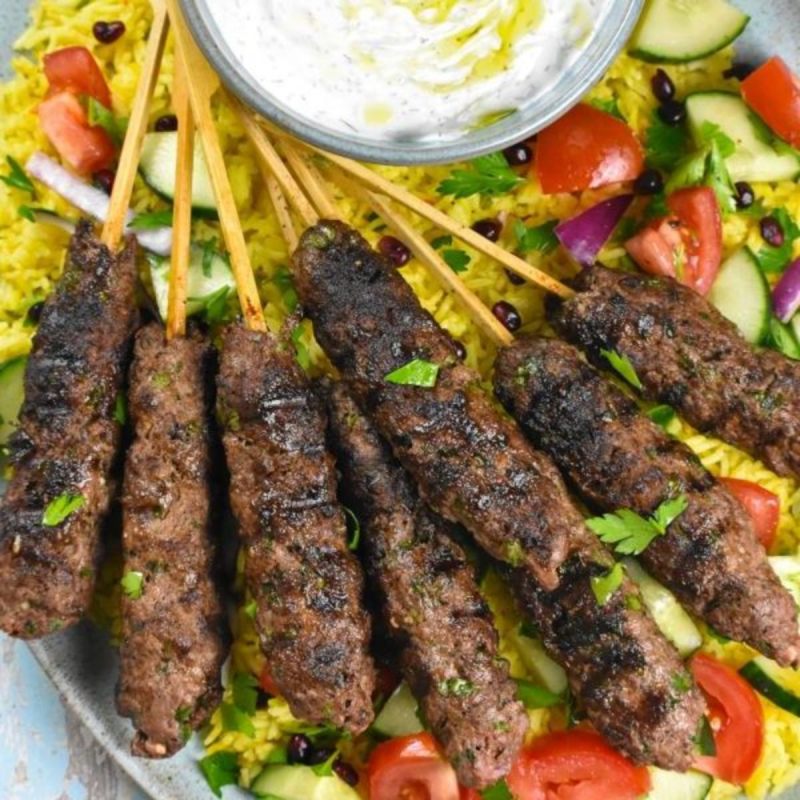
Screenshot of https://gypsyplate.com/kofta-kebabs/ Video by Mark Wiens -
Arancini, the golden orbs of Sicily, shine brightly in the Mediterranean food galaxy. Walk into a bustling Italian marketplace, and these crispy delights call out. Arancini hails from the sun-kissed lands of Sicily. Therefore, it bears a legacy that speaks of local festivities, family traditions, and inventive culinary spirit.
Peek inside these balls, and you find a heart of cooked rice. Often, this rice pairs with savory fillings, ranging from meat sauces to creamy cheese. The outer layer? It's a crusty, breadcrumb coating. It creates a delightful contrast with the soft, flavorful core.
The name "arancini" draws inspiration from the Italian word for 'little oranges'. Their round shape and golden hue surely justify this cute nomenclature. Though primarily spherical, in some parts of Sicily, they take on a conical form. The unique shape echoes the island's hilly landscapes.
Diving into the taste, arancini offers a playground of textures and flavors. The crunchy exterior gives way to creamy rice. Embedded within this softness are bursts of meaty richness or cheese gooeyness. Each bite brings forth layers, making it an adventure for the palate.
Accompaniments play a key role too. A robust tomato sauce often escorts arancini to enhance its flavor profile. Furthermore, some prefer to dunk these balls in tangy marinara or a herby pesto. It adds another dimension to the eating experience.
Across the globe, arancini's charm remains undiminished. From local Italian festivals to international gourmet events, they make their presence felt. Their adaptability is noteworthy. Chefs introduce fillings like mushrooms, seafood, or even sweet variants. This adaptability, paired with a rich heritage, secures arancini's spot as a must-try Mediterranean marvel.
Key Takeaways:
- Origin: Sicilian, Italy
- Ingredients: Cooked rice balls filled with meat, cheese, or other fillings, coated with breadcrumbs.
- Flavor: Crunchy outside with a creamy, flavorful core.
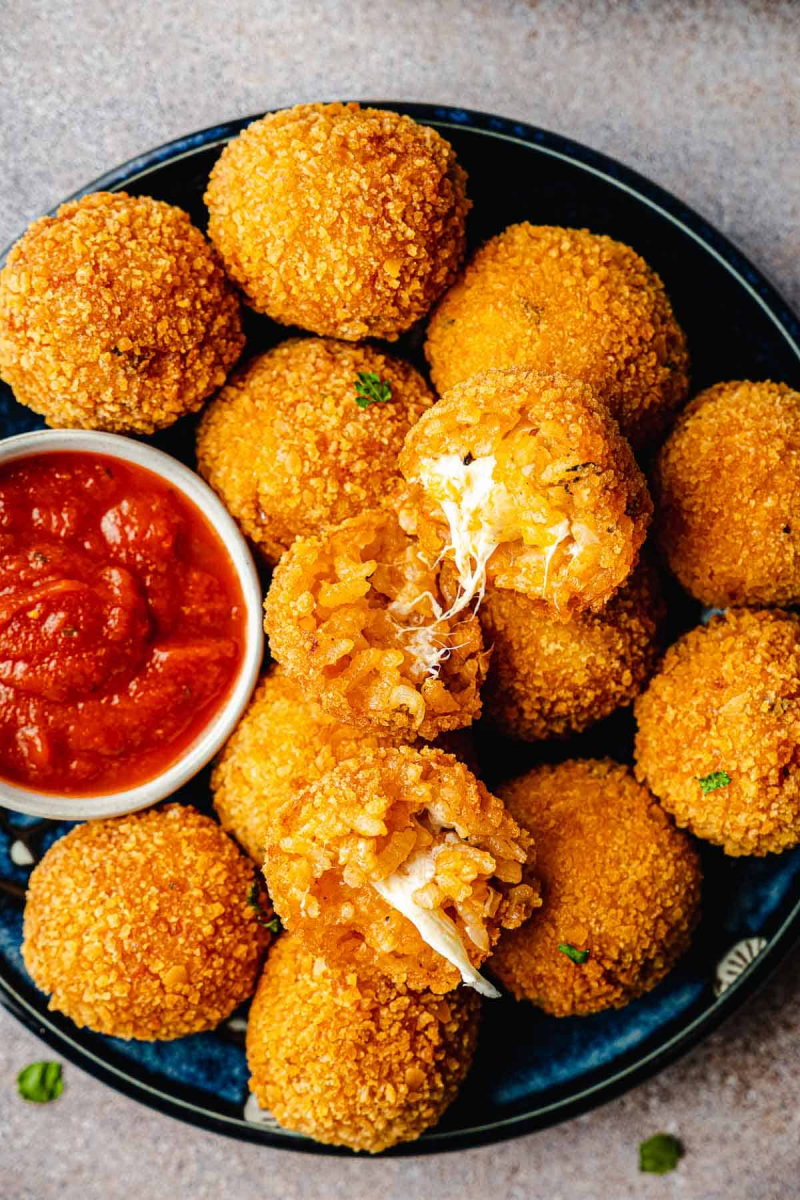
Screenshot of https://www.themediterraneandish.com/arancini/ Video by Eater -
Börek, the flaky wonder of the Mediterranean, invites every food lover with its layers of delight. Wander the streets of Turkey or the Balkans, and its aroma wafts through the air. This pastry, with its intricate folds and fillings, has roots in the Ottoman Empire. Hence it echoes tales of sultans and their grand feasts.
Delve into its structure, and Börek showcases thin layers of dough, known as yufka. Between these layers nestle a variety of fillings. Sometimes, it's a mix of spinach and cheese. Other times, minced meat or even potatoes stake their claim. Each version tells a story of its region, reflecting local tastes and traditions.
The magic of Börek lies in its dough. When baked or fried, it turns golden, crispy, and beautifully flaky. Every bite offers a crunchy sound, leading to the soft, flavorful filling inside. It's this juxtaposition of textures that makes Börek stand out.
A closer look at its variants unveils its diverse nature. In Turkey, 'Sigara Böreği' resembles cigars, filled with cheese and parsley. 'Su Böreği' leans towards the softer side, with layers soaked in boiling water before baking. Move to the Balkans, and you find Börek morphing into spiral shapes or even larger pies. Each carries its regional stamp.
Accompanying Börek is often a side of yogurt, acting as a cooling counterpart. This pairing not only balances the flavors but also offers a creamy texture against the pastry's crispness. Whether it's breakfast, a snack, or part of a larger meal, Börek fits in seamlessly.
Its global journey is noteworthy. From its homeland to cafes in Europe and beyond, Börek has carved a niche. Its versatility allows it to wear many hats - from a quick bite to an elegant appetizer. Its rich legacy, combined with adaptability, firmly places Börek on the Mediterranean culinary map.
Key Takeaways:
- Origin: Turkey and the Balkans
- Ingredients: Thin layers of yufka dough with varied fillings like cheese, spinach, meat, or potatoes.
- Flavor: Crispy, flaky exterior complemented by soft, savory fillings.
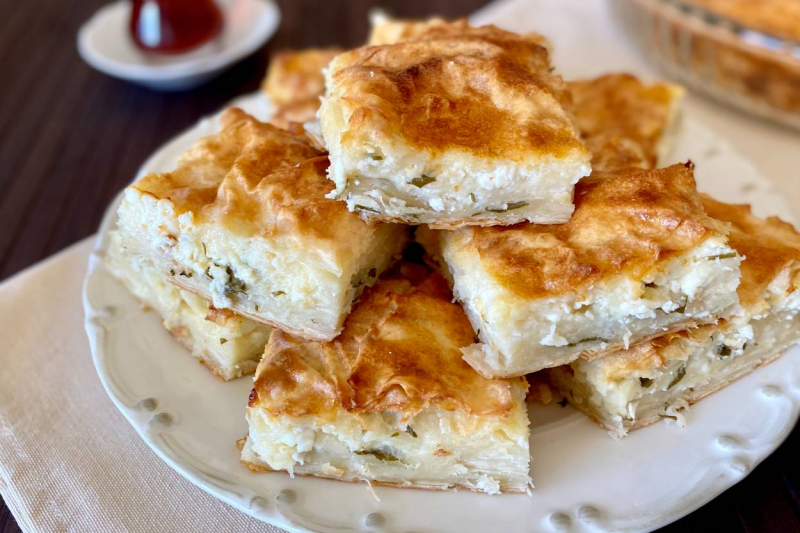
Screenshot of https://vidarbergum.com/recipe/turkish-tray-borek-with-cheese/ Video by Taste and Culture Stories -
Souvlaki, Greece's gift to the culinary world, is a true testament to simple flavors creating big impacts. As you navigate the alleys of Athens or the shores of Santorini, the sizzle of this grilled delight is a familiar soundtrack. Born from ancient Greek traditions, Souvlaki has held onto its charm. The food resonates with both locals and travelers.
At its core, Souvlaki consists of small skewered chunks of meat. While pork is the traditional choice, chicken, lamb, or even beef often make the cut. These meat pieces undergo marination. A blend of olive oil, lemon, oregano, and garlic wraps around each chunk. This mix infuses them with zesty and aromatic notes.
The grilling process is crucial. Open flames kiss the meat, ensuring a charred exterior and juicy interior. The skewers showcase perfectly cooked morsels, with the marinade's flavors highlighted with each bite.
A typical Souvlaki experience transcends the skewered meat. Pita bread, soft and slightly toasted, often serves as a wrap. Inside, apart from the meat, dashes of tzatziki sauce, tomatoes, onions. And sometimes, a sprinkle of fries complete the ensemble. It's a riot of textures and flavors, all packed into a handheld delight.
In various parts of Greece, Souvlaki goes by different monikers. Whether it's 'Kalamaki' in Athens or 'Souvlakia' in other regions, the essence remains consistent. The serving style, however, might see a twist. Sometimes it’s on a plate with accompaniments. Other times, it's in a sandwich form, easy for on-the-go munching.
Its appeal has crossed borders. From the streets of Greece, Souvlaki has found fans worldwide. It's not just a street food anymore but a symbol of Greek hospitality and culinary prowess. Whether at a family gathering or a global food festival, Souvlaki stands proud.
Key Takeaways:
- Origin: Greece
- Ingredients: Skewered meat chunks, often marinated in olive oil, lemon, oregano, and garlic.
- Flavor: Charred, juicy meat with a zesty marinade punch.
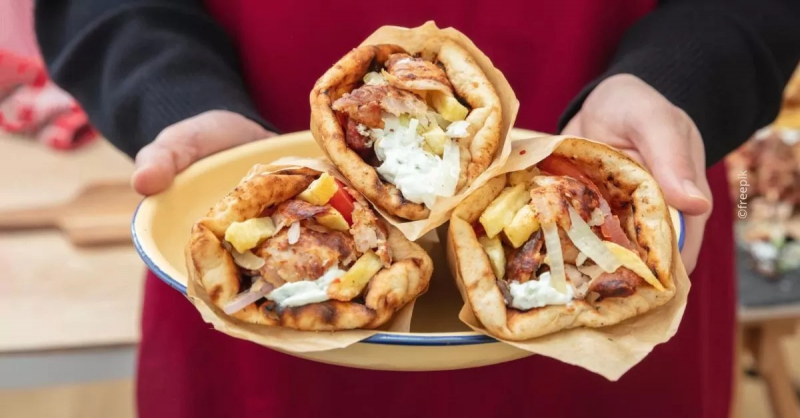
Screenshot of https://www.greekality.com/street-food/athens-souvlaki/ Video by Mark Wiens -
Lahmacun holds a special place in the hearts of Mediterranean food enthusiasts. Often hailed as the "Turkish Pizza," its origin roots deep into the culinary culture of Turkey. As you stroll through bustling Turkish markets, the thin crust of Lahmacun, laden with meaty goodness, beckons from every corner.
Unlike conventional pizzas, Lahmacun boasts a thin, crispy base. The dough, made primarily from flour, water, and yeast, is rolled out to near translucency. It's this delicate base that sets Lahmacun apart. It gives it an almost cracker-like crunch.
But the base is just the beginning. Lahmacun's true character emerges with its topping. A rich mixture of minced meat, often beef or lamb, is blended with tomatoes, peppers, onions, and a myriad of spices. This flavorful mixture is spread across the dough, and ensures every inch is coated.
Once prepped, Lahmacun takes a quick trip into a roaring oven. The high temperatures ensure that the base becomes crisp while the meat cooks to perfection. The result? A marriage of crispy and savory, every bite offering a burst of flavors.
Serving Lahmacun is an art in itself. Fresh out of the oven, it's often rolled up with fresh greens. Rucola, parsley, or even lettuce adds a fresh crunch, to balance the richness of the meat. A squeeze of lemon, and it's ready to be devoured.
In Turkey, Lahmacun is more than just food. It's an experience. Whether shared among friends at a local eatery or enjoyed solo on a quiet evening, its essence remains undiluted. And its popularity isn't confined to Turkey. Neighboring regions, including parts of the Middle East and the Caucasus, have embraced Lahmacun. Each adds their unique twist.
Key Takeaways:
- Origin: Turkey
- Ingredients: Thin dough base topped with a mixture of minced meat, tomatoes, peppers, onions, and spices.
- Flavor: Crispy, meaty, and spiced with a hint of freshness from added greens.
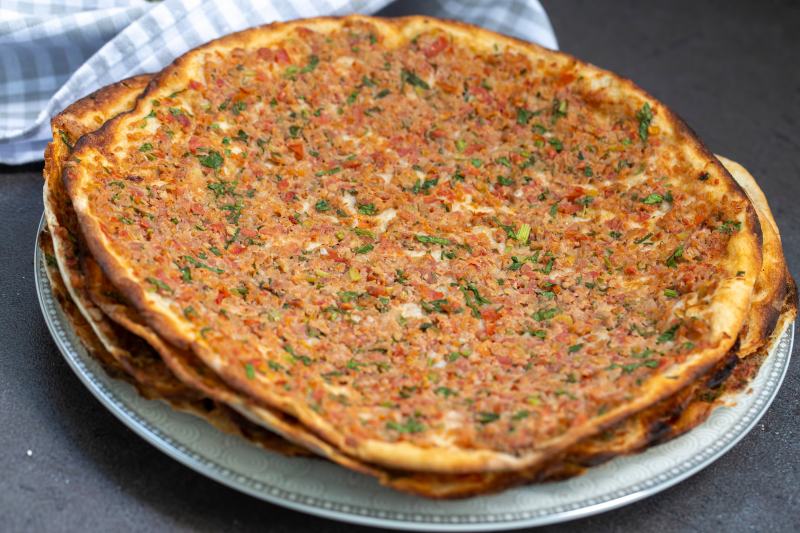
Screenshot of https://www.tasteatlas.com/lahmacun/recipe Video by KEBAB BABA -
Gyros, a Greek culinary gem, is a sight to behold and a delight to savor. Amid the symphony of sounds, the unmistakable sight of meat roasting vertically captures attention. That's Gyros, a street food sensation that has found its way into global cuisine.
At its core, Gyros features meat cooked on a vertical rotisserie. Traditionally, the choice of meat varies from pork, beef, to chicken. The marinating process is crucial. The meat bathes in a mix of garlic, rosemary, oregano, and other Greek spices. This ensures every slice is a burst of flavors.
The cooking process is a visual treat. As the rotisserie turns, the outer layer of the meat crisps to perfection. It's then shaved off in thin slices. The food has a crispy exterior and a tender interior. The precision here is key, getting the meat just right every single time.
But Gyros is more than just meat. Once sliced, it's typically served wrapped in a fluffy pita bread. Inside this wrap, you'll find a mix of fresh vegetables like tomatoes and onions. To elevate the taste, a generous dollop of tzatziki sauce, a tangy yogurt-based concoction, complements the meat.
In Greece, Gyros is more than a dish; it's a tradition. Whether on a quick lunch break or a leisurely evening stroll, locals and tourists alike can be seen enjoying this delicacy. The easy-to-carry wrap format makes it a perfect on-the-go meal.
Gyros also embodies adaptability. While traditional recipes remain popular, many establishments introduce innovative variations. Some might add feta cheese, while others experiment with different sauces. Yet, the essence of Gyros remains unchanged. It's no surprise that the love for Gyros isn't just limited to Greece. From Europe to the Americas, this Greek marvel continues to tantalize taste buds.
Key Takeaways:
- Origin: Greece
- Ingredients: Meat (usually pork, beef, or chicken) marinated in Greek spices, cooked on a vertical rotisserie, and served in pita bread.
- Flavor: Crispy meat slices balanced with fresh veggies and the tangy touch of tzatziki sauce.
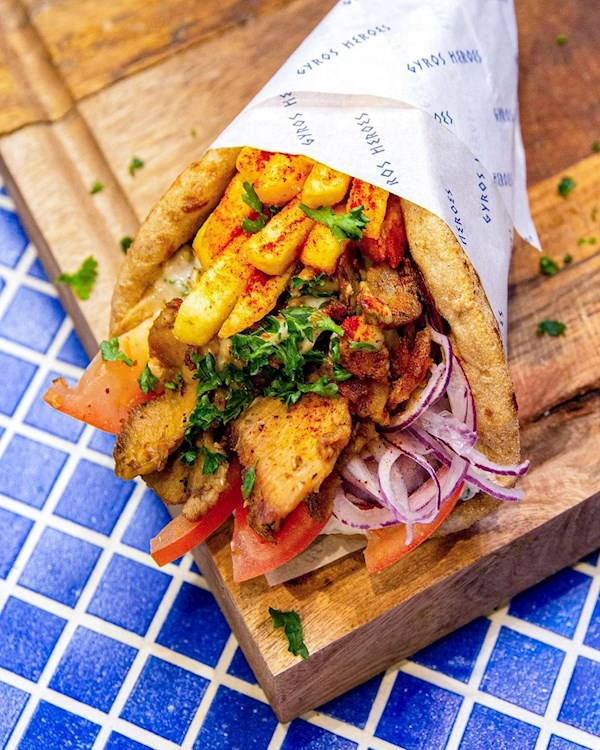
Screenshot of https://www.tasteatlas.com/gyros Video by settime2588 -
A morning in Turkey is incomplete without the scent of Simit wafting through the air. Simit, often called the 'Turkish Bagel', is a staple in Turkish cuisine. However, calling it a bagel might be an oversimplification. It’s so much more.
Stroll through any Turkish city, and you'll see vendors with carts laden with these sesame-coated bread rings. The golden-brown circular delight has been a part of Turkish culture for centuries. Each ring tells a story of tradition, taste, and culinary artistry.
Unlike regular bread, Simit has a distinctive texture. The outside feels crispy, thanks to the sesame seeds. These seeds don't just add texture; they introduce a nutty flavor that's hard to resist. Inside, the bread is soft, fluffy, and fresh. The contrast between the crunchy exterior and the soft interior is what sets Simit apart.
But what gives Simit its unique taste? The secret lies in grape molasses. Before baking, the dough rings are dipped into this sweet mixture. This not only imparts a subtle sweetness but also aids in achieving that desirable golden hue.
One of the joys of eating Simit is its versatility. While it's delicious on its own, many Turks love pairing it with sides. Think fresh white cheese, juicy tomatoes, and plump olives. Add a cup of traditional Turkish tea to this, and you have a breakfast fit for kings.
Though rooted in Turkey, Simit's fame has crossed borders. It's now enjoyed in various parts of the world. Many international bakeries have added their own twist to it. Yet, the traditional Turkish Simit remains unmatched in flavor and texture.
In the end, Simit is not just bread. It's a reflection of Turkish heritage, a testament to its rich culinary history, and a treat that continues to bring joy to millions, one ring at a time.
Key Takeaways:
- Origin: Turkey
- Ingredients: Bread rings coated in grape molasses and sesame seeds.
- Flavor: Nutty from sesame, subtle sweetness from molasses, crispy outside and soft inside.
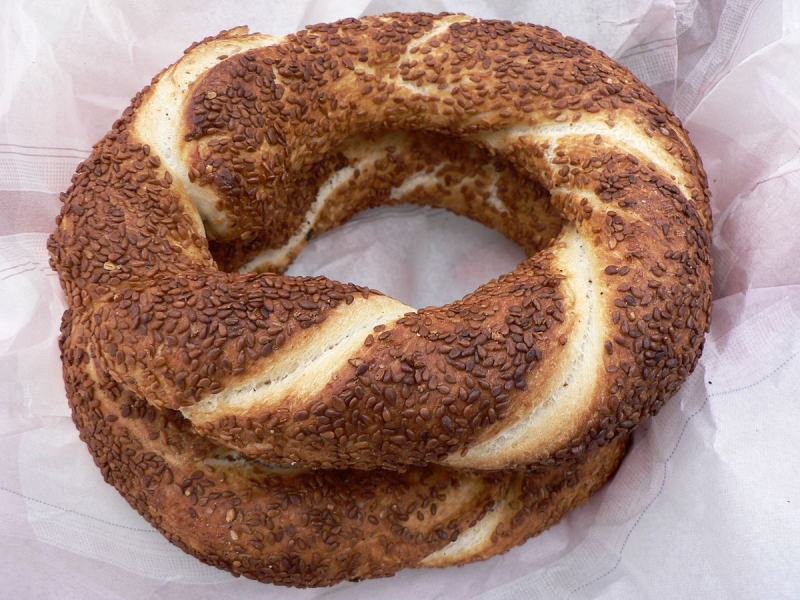
Screenshot of https://en.wikipedia.org/wiki/Simit Video by Filmhouse 24 -
In the bustling streets of Palermo, Sicily, a unique culinary delight beckons. Known as Pani Ca Meusa, this sandwich is a testament to Sicilian street food prowess. At first glance, it might look like a typical sandwich. But it's far from ordinary.
Pani Ca Meusa translates to "bread with spleen". It's an age-old Sicilian favorite with deep roots in Palermo's culinary landscape. Originating from times when nothing went to waste, this dish truly celebrates nose-to-tail eating.
The bread used for this delicacy is sesame-crusted. Fresh, soft, and slightly crispy on the outside, it's a perfect envelope for the filling. And the filling is where the magic happens. Chunks of beef spleen and lung, boiled and then fried, make up the core. But, don't let the unique choice of meat deter you. The end result is incredibly tender and flavorful.
Preparation of Pani Ca Meusa is an art in itself. The meats, after boiling, are fried in lard. This process gives them an incredibly rich and succulent texture. Once fried to perfection, the meat is stuffed into the sesame bread. It's then often topped with a slice of fresh lemon or a sprinkle of caciocavallo cheese. The sharpness of the lemon or cheese balances the richness of the meat. It creates a harmonious burst of flavors.
Walking around Palermo, you'll find vendors proudly serving this sandwich. Each bite is a mix of textures and flavors, telling a story of the city's rich history and culinary traditions. Pani Ca Meusa might not be for everyone. It's bold, different, and challenges the palate. Yet, for those willing to venture, it offers a taste that's hard to forget. A dish that started as a way to minimize waste is now a beloved staple.
Key Takeaways:
- Origin: Palermo, Sicily
- Ingredients: Sesame-crusted bread filled with boiled and fried beef spleen and lung.
- Flavor: Rich and succulent meat balanced with sharp lemon or cheese.
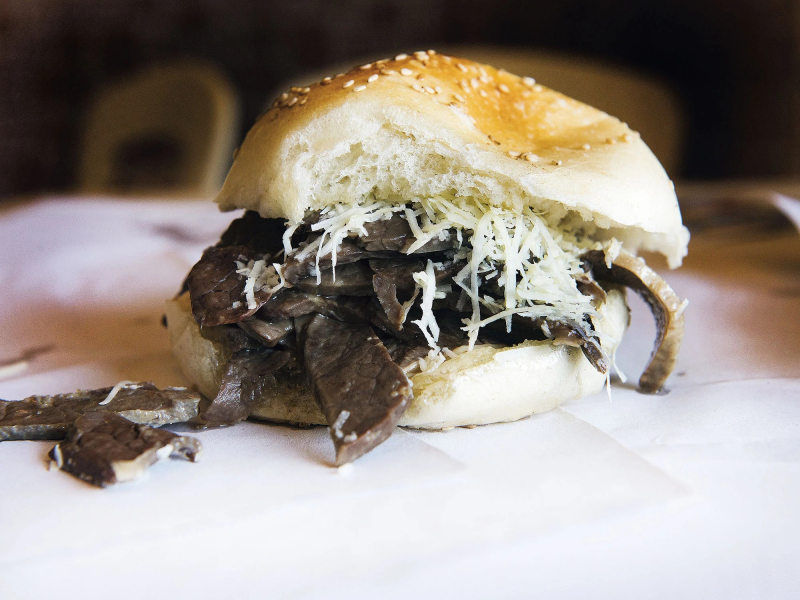
Screenshot of https://www.saveur.com/best-sandwich-sicily-pane-ca-meusa/ Video by Seasoned Traveller












